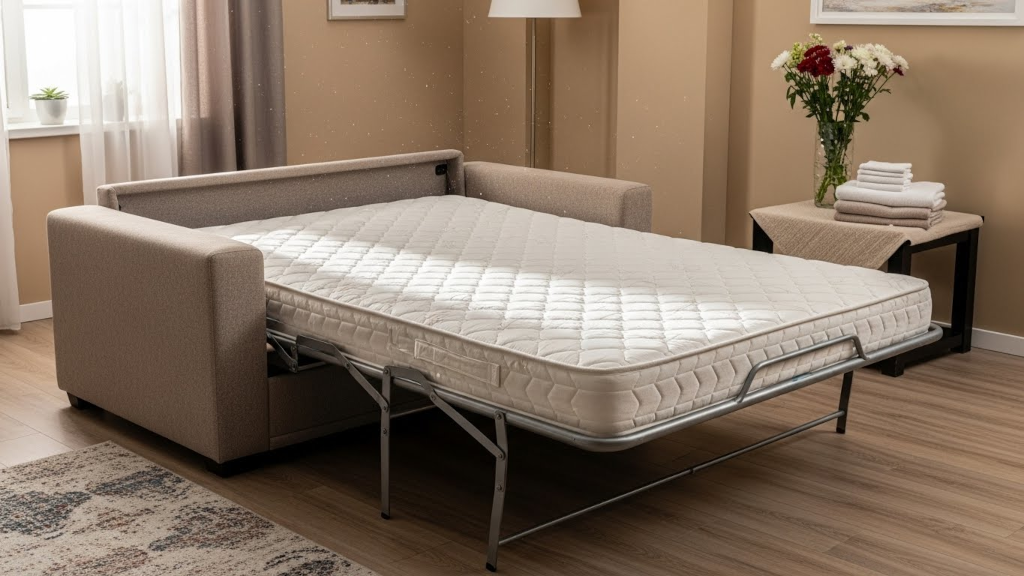Cooking with spices like curry, garlic, and onions fills your kitchen with comfort and flavor. The problem starts when those strong aromas linger long after the meal is finished. Bold scents can drift through your kitchen air, cling to fabrics, and turn into stubborn odors that make your home feel less fresh.
These smells come from tiny oil droplets released during cooking. The heat spreads those oils throughout the air, where they mix with steam and dust. Over time, these odor molecules land on curtains, rugs, and other soft surfaces. That’s why even after cleaning, a faint scent can remain.
Understanding how odors form helps you remove them effectively. With the right tools and habits, you can enjoy flavorful cooking without living with lingering odors.
Why Kitchen Odors Stick Around
When foods rich in oils and spices are heated, they release vapor and microscopic residue into the air. These particles drift and attach themselves to walls, cabinets, and fabrics. Each layer traps more odor molecules, turning into a film that keeps releasing scent even after the kitchen cools.
Open-concept homes make this issue worse. With no walls to separate cooking zones, odors spread faster into nearby rooms. That faint trace of garlic or curry in the living room often comes from airborne particles settling into upholstery or vents.
Standard air fresheners mask smells temporarily. They layer a new fragrance over the existing odor but never remove it. Odor-neutralizing sprays are different. They break down the odor molecules, removing the source of the smell for good.
How to Remove Cooking Odors Quickly
Getting rid of kitchen odors is easier when you start early. These steps help restore clean air and stop smells from spreading:
• Ventilate before cooking: Turn on the hood fan or open a window to release steam and oils before they settle.
• Spray odor neutralizer during cleanup: A few sprays on fabrics, soft surfaces, and air vents will remove odor molecules before they linger.
• Clean with vinegar or baking soda: Wipe counters and stovetops with a mild mix to cut through oily residue that traps smell.
• Replace or wash kitchen rugs often: Rugs absorb odor quickly and need regular cleaning to stay fresh.
These quick steps reduce buildup and make odor removal faster after every meal.

Odor-Neutralizing Sprays vs. Air Fresheners
Air fresheners only add scent to the air. In a small kitchen, this can create a mix of perfume and leftover food smell that feels heavy. Odor-neutralizing sprays use a scientific process called molecular bonding. The spray’s active ingredients attach to odor molecules and change their structure so they no longer emit a smell.
Non-toxic sprays are safe for use on soft surfaces, counters, and in shared spaces. They leave no residue or artificial perfume. Because they’re water-based and non-flammable, they also meet air safety standards and can be used daily without concern.
Using an odor eliminator after each cooking session keeps your kitchen air balanced and breathable while preventing odors from building up again.
Improving Air Quality in Open-Concept Homes
Kitchens that connect to living areas often spread odors faster than closed rooms. The same open airflow that makes your home feel spacious also lets smoke and cooking oils travel freely. To prevent unwanted odors from settling, balance airflow and neutralization together.
Run your range hood or air purifier for at least twenty minutes after cooking. This helps filter vaporized oils that escape into the air. Follow up with a light mist of odor eliminator around vents, curtains, and furniture. As clean air circulates, the neutralizer removes remaining particles and prevents buildup.
This method works especially well for homes that frequently use garlic, fish, or spices known for strong, lasting smells.
Why Odor Molecules Are So Persistent
Odor molecules are smaller than dust. They easily slip into fabrics, wood, and even paint layers. Once trapped, they continue reacting with moisture and heat, slowly releasing scent back into the air. Regular cleaning removes surface grime but doesn’t touch these deeper layers.
That’s why professional-level odor removal depends on products designed to neutralize odor molecules completely. Enzyme-based sprays and water-based odor eliminators target those tiny compounds, ensuring they’re destroyed instead of just diluted.
Keeping your kitchen air clean requires addressing both the visible and invisible sources of odor.
Safe Odor Control for Every Kitchen
Safety matters just as much as performance. High-quality odor-neutralizing sprays use non-toxic, water-based ingredients that eliminate odors while maintaining indoor air quality. They’re safe to use on countertops, fabrics, and near pets or children.
Partnering with a trusted odor control company ensures access to products tested for air safety and long-term results. These professional-grade sprays are designed to handle strong kitchen odors, from curry to fish, without leaving artificial fragrance behind.
By adding odor neutralization to your daily routine, you’ll notice cleaner air, balanced moisture, and fewer unwanted smells throughout the day.
Cooking should make your home feel inviting, not stinky. When you use safe odor-neutralizing sprays and maintain airflow, you create a space that smells as good as it looks.








